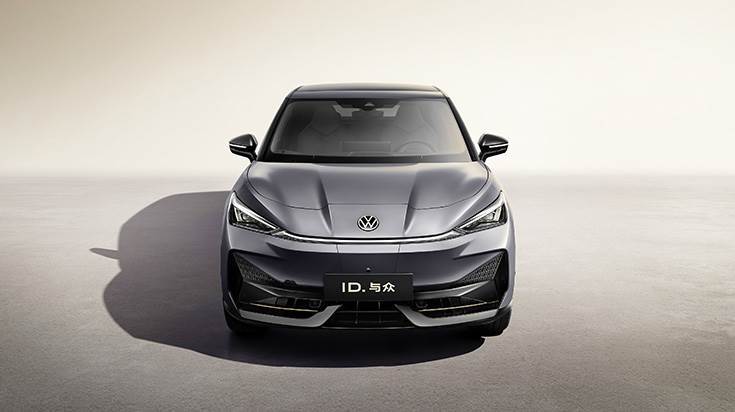The Volkswagen Group has taken the next step to advance its ‘In China, for China” strategy. The company is strengthening its successful 40-year partnership with SAIC Motor for the long term. In Shanghai, on November 27, both companies signed an extension of their joint venture agreement until the year 2040.
By extending the agreement, the partners are creating early planning security beyond 2030 in a very dynamic development phase of the Chinese automotive market. At the same time, Volkswagen and SAIC are accelerating the transformation of their joint venture company, SAIC Volkswagen, in the areas of product portfolio, production, and decarbonisation. The shared goal of the partners is to achieve a leading market position for SAIC Volkswagen with the Volkswagen Passenger Cars and Audi brands in the era of intelligent, fully connected electric vehicles.
 In July 2024, the all-electric ID. Unyx became the first model from the new eponymous VW sub-brand exclusively for China to go into series production; four more vehicles including SUVS and sedans are planned within the next three years.
In July 2024, the all-electric ID. Unyx became the first model from the new eponymous VW sub-brand exclusively for China to go into series production; four more vehicles including SUVS and sedans are planned within the next three years.
“Volkswagen and SAIC are pioneers of individual mobility in China. Together, we established one of the first international joint ventures in the region 40 years ago. Since its establishment, SAIC Volkswagen has earned the trust of more than 28 million customers. With the long-term contract extension, we underline the importance of this collaboration and the significance of the Chinese market for the Volkswagen Group. We are accelerating the transformation of SAIC Volkswagen in line with our ‘In China, for China’ strategy on all levels, bringing a new generation of electrified vehicles onto the road by 2026. This ensures that our partnership is economically and technologically future proof,” said Ralf Brandstätter, Member of the Board of Management of Volkswagen AG for China. “China is a driver of innovation for autonomous driving and electric mobility. With the new agreement, we are intensifying our integration into the Chinese ecosystem and consistently leveraging local innovation strength. This also creates a strategic competitive advantage for the Volkswagen Group worldwide.”
Wang Xiaoqiu, Chairman of SAIC Motor, said: “Electrification and the transformation of the car into an intelligent vehicle are the defining trends in the automotive industry. In view of the highly dynamic market, SAIC Motors, the first Chinese carmaker to sell more than one million vehicles in the electric segment and in overseas markets, is deepening and expanding its cooperation with Volkswagen.”
He added, “The focus for SAIC Volkswagen is on the development of new, intelligent electric vehicles in order to maintain an industry-leading position in the field of smart technologies. The decisive factors here are consistent customer orientation, quality management and the use of our own innovative strength. We will break new ground with ‘China Speed’. The aim of the joint venture is to achieve sustainable and steady sales growth and a leading market position. In this way, we are contributing to the further positive development of the Chinese and global automotive industry.”

THREE KEY GROWTH STRATEGIES FOR THE FUTURE
Volkswagen and SAIC have identified three key areas to accelerate the transformation of the SAIC Volkswagen joint venture with the Volkswagen Passenger Cars and Audi brands:
1. Expansion of Product Offensive with New E-Models, Range-Extender Variants, and Plug-In Hybrids
By 2030, SAIC Volkswagen will introduce a total of 18 new models to the market. In light of the dynamic market development, the joint venture partners are particularly focusing on an accelerated electrification strategy. This includes eight new electric models.
As early as 2026, two electric vehicles based on the newly locally developed ‘Compact Main Platform’ (CMP) – equipped with a state-of-the-art zonal electric architecture used for the first time across the Group – will be launched. Additionally, the still highly profitable internal combustion engine offering will be transitioned into the electric mobility world by 2026 with three plug-in hybrid models and, for the first time, two range-extender variants. This will rapidly further strengthen the company’s position in the fast-growing market for fully electric and partially electrified vehicles.
At the same time, the new vehicles will be consistently tailored to customer needs as part of the ‘In China, for China’ strategy. Of the 18 models that SAIC Volkswagen will introduce to the market by 2030, 15 vehicles are being developed exclusively for the Chinese market.
2. Optimisation of the Production Network
Given the rapidly growing market demand for EVs and increasing competitive pressure, the JV partners will also accelerate the transformation of SVW’s production network with a focus on cost-effectiveness and productivity. In this context, existing production capacity for internal combustion vehicles will be gradually reduced in the coming years. While many SVW sites are being, or have already been, converted to produce EVs based on customer demand, alternative economic solutions will be examined in individual cases. This also applies to the joint venture site in Urumqi. Due to economic reasons, the site has now been sold by the joint venture as part of the realignment. The same applies to the test tracks in Turpan and Anting.
3. Consistent Decarbonisation Initiatives
Both partners have agreed on ambitious decarbonisation goals for sustainability. SAIC Volkswagen aims to reduce its CO2 emissions by 25% by 2030 compared to 2018 levels and is actively pushing forward its transformation towards carbon neutrality at the corporate level. Thereby, SAIC Volkswagen is following the Group’s objective of achieving carbon neutrality by 2050.
Over the next three years alone, the Group and its brands will bring 40 new models to the Chinese market, half of which will be electrified. By 2030, the Group will offer more than 30 electric models in China.
